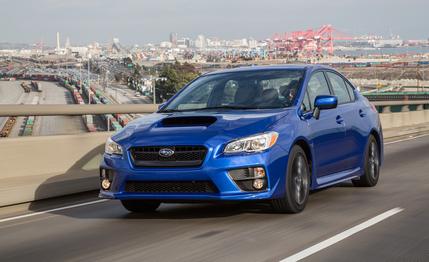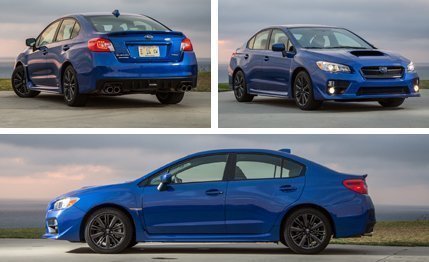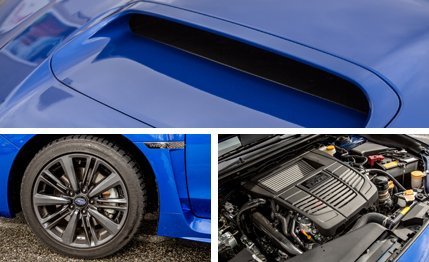 Instrumented Test
Instrumented Test
Even the cruelest parking valets are unlikely to rev a car’s engine to redline and dump its clutch. But that’s just what a Subaru engineer suggested we do when we asked him how to get the best acceleration times out of the 2015 WRX.
In human terms, this sort of launch is equivalent to jumping out of a moving car and hoping to suddenly start running like Usain Bolt.

“Rev the engine high enough to get wheelspin when the clutch engages, and shift out of first around 5200 rpm,” advised the engineer. With the four-wheel-drive traction of the WRX in mind, we wondered aloud, “You sure the clutch and gearbox will survive that launch?”
“Oh, yes,” he grinned.

And so, here’s how we hit 60 mph in 4.8 seconds: We held the engine at the 6700-rpm redline, jumped off the clutch, shifted out of first at about 5300 rpm, and held on to second until the car hit the redline in second at 61 mph. To get down to a repeatable 4.8-second time, we subjected the WRX to this mechanical mayhem 14 times. To its credit, it didn’t utter a peep of discontent. The clutch didn’t slip, no driveshafts turned into fusilli, and the six-speed ’box shifted and responded exactly as it did when we started. Will you try this with your new WRX? We doubt it. And if instead you just ease off the line, your times will likely be somewhere closer to our 6.3-second rolling-start 5-to-60-mph figure.
A machine that takes a licking but keeps on ticking is deeply endearing. Just ask anyone who wears a Timex. But that’s not the only reason we’re charmed by the new WRX. Subaru has made its latest version into a handler, and that’s this generation’s big leap forward. Previously, the WRX left dynamic finesse to the pricier STI version. But compared with the old WRX, the new car’s structure is 41 percent stiffer for better handling fidelity, and the spring rates have been cranked up by 39 percent at the front and 62 percent in the rear to further sharpen up things. There are also larger anti-roll bars and firmer bushings, and the aluminum lower control arms of the strut front suspension are unique to the WRX. Sticky Dunlop Sport Maxx RT summer tires are standard.
To help keep the WRX stable in limit-cornering situations, the Active Torque Vectoring (ATV) system uses the front brakes to momentarily clamp one wheel, which helps steer the car through a corner. On the skidpad, our WRX test car clung fast at 0.95 g.

It takes less than a quarter-mile of driving to feel the newly stiffened WRX jiggling the untoned parts of your body. On patched pavement or over freeway expansion joints, the car will jostle you, but the rigid body quickly attenuates impacts. Compared with the Impreza upon which it is based—but with which it no longer shares a name—the WRX gets more high-strength steel in its A-pillars, a thicker floorpan, and additional gussets that connect the fire wall with the passenger cabin. The payoff for the firm ride is excellent body control and sports-car-like resistance to both diving under braking and squatting under acceleration.
To combat brake fade, Subaru fits 12.4-inch vented rotors (0.8 inch larger than the last WRX’s) and two-piston calipers up front, and 11.3-inch solid rotors with single-piston calipers in back. A larger master cylinder and a more responsive booster are intended to improve brake feel. Although they do feel better than before, the WRX’s brakes lack the bite and arresting grab of a Ford Focus ST’s or a 2015 Volkswagen GTI’s. That said, the WRX didn’t exhibit any fade when it executed back-to-back stops from 70 mph in only 160 feet.